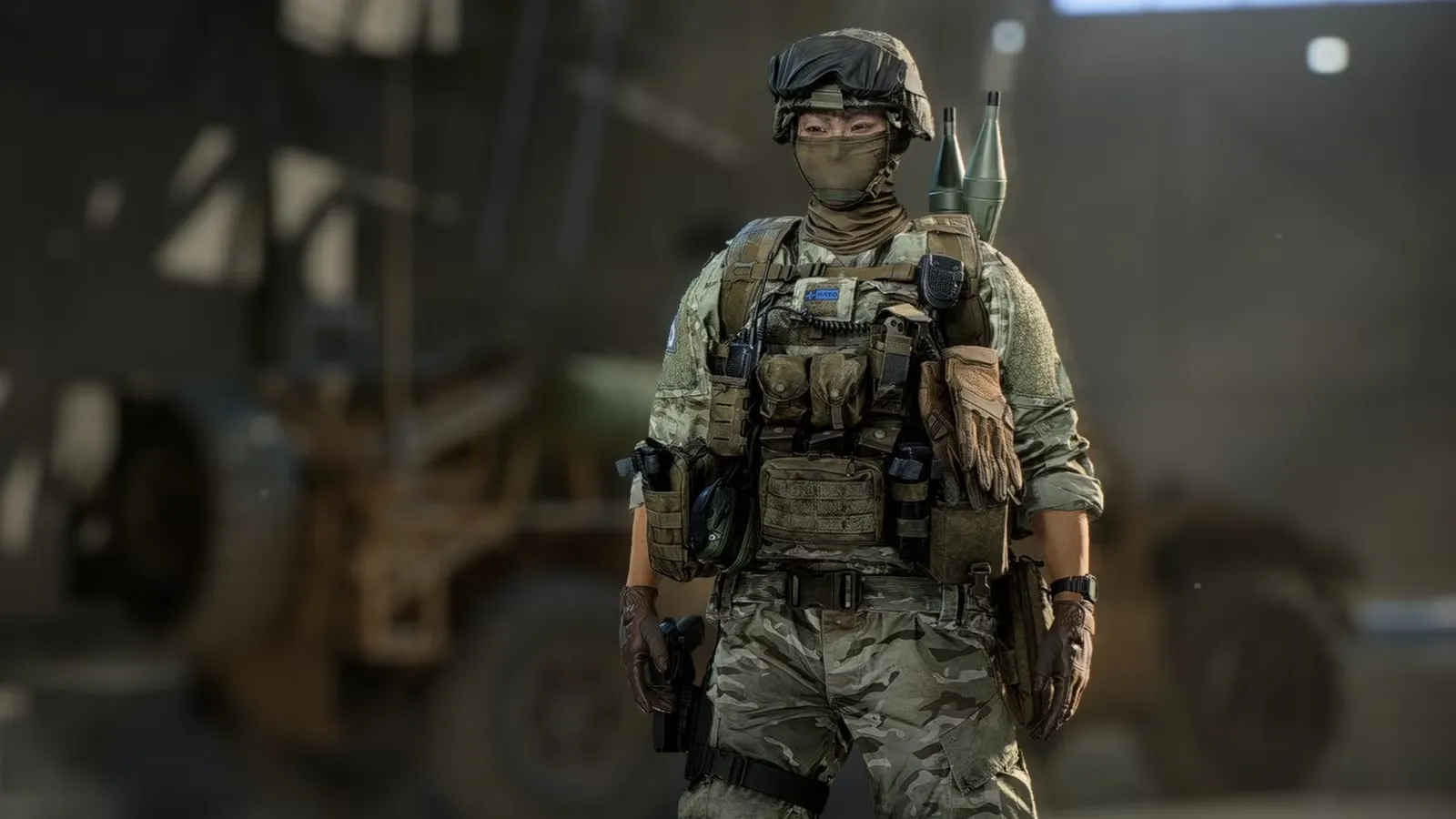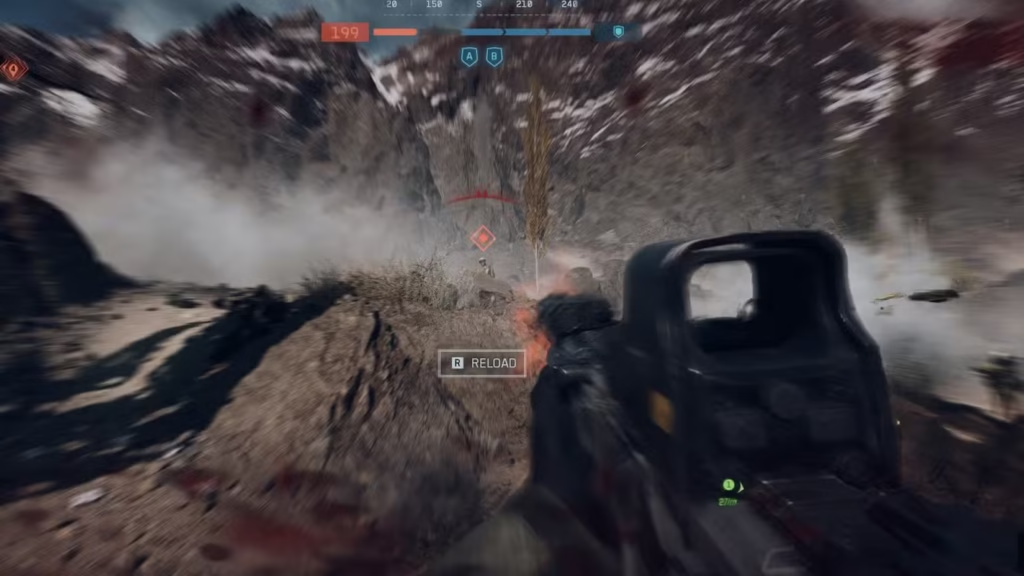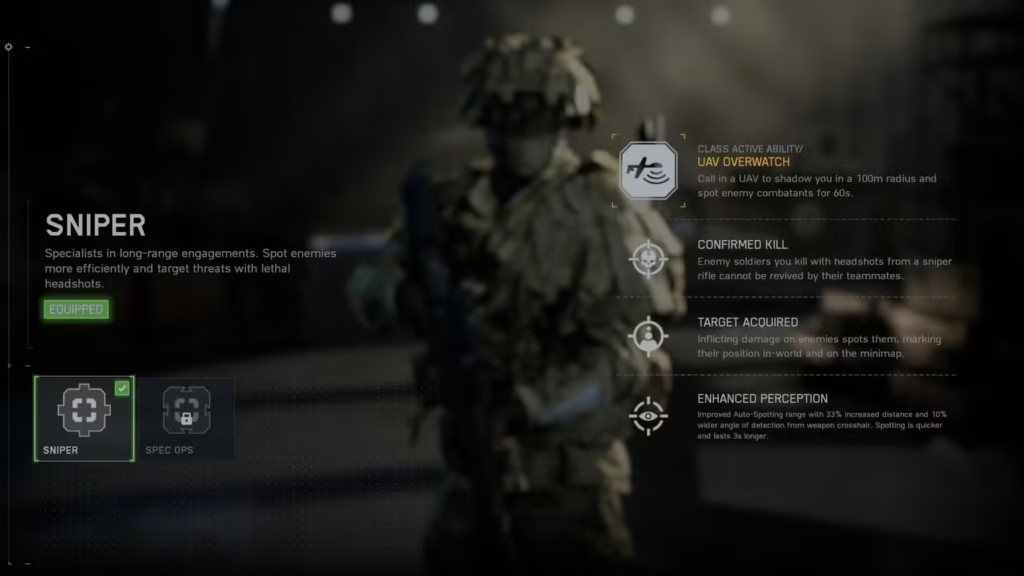
Newsletter Subscribe
Enter your email address below and subscribe to our newsletter

Enter your email address below and subscribe to our newsletter
Your Source for Game News and Guides

Master spotting and pinging in Battlefield 6 with our complete guide. Learn auto-spotting mechanics, communication wheel commands
In Battlefield 6, communication isn’t just helpful—it’s the difference between victory and getting steamrolled. The game’s revamped spotting system makes it easier than ever to mark enemies, coordinate attacks, and rack up assist points, even if you’re playing with randoms who never touch their microphones.
Here’s the thing: spotting enemies in Battlefield 6 actually rewards you. Every time a teammate kills someone you’ve marked, you get assist points. That means you’re earning XP for simply pointing out threats, making it one of the easiest ways to boost your score while helping your team. And if you’re working on XP farming, spotting should be second nature.
The spotting system has evolved significantly from previous Battlefield games, introducing auto-spotting mechanics alongside traditional manual pinging. Whether you’re a Recon class player scanning the battlefield from a distance or an Assault class pushing objectives, understanding how to effectively communicate enemy positions can turn the tide of battle.
Let’s break down everything you need to know about spotting, pinging, and maximizing your intel-gathering capabilities in Battlefield 6.
The fundamental ping system is straightforward and works across all platforms:

When you press the ping button once, it places a green marker at your aiming point. This marker is visible to your entire squad and indicates a location of interest—could be an enemy position, a strategic point, or just a general area you want teammates to focus on.
Double-tapping the ping button places a red marker instead of green. This danger ping specifically alerts your squad that the marked area is hostile or poses a threat. Use it when you spot enemies but can’t engage, when you’re retreating from an overwhelming force, or when warning teammates about dangerous zones like sniper nests or vehicle positions.
Holding down the ping button opens the communication wheel, which contains context-specific commands:
The communication wheel is essential for coordinating with your squad, especially when voice chat isn’t an option. It lets you formulate basic tactical plans without ever speaking a word.
Here’s where Battlefield 6 differs significantly from previous titles: enemies are automatically spotted when you aim at them. This mechanic has been somewhat controversial in the community, but understanding how it works is crucial for effective gameplay.
When you aim your weapon at an enemy soldier or vehicle, they’re automatically marked for your squad to see. You don’t need to press any buttons—just point your sights at a target, and after a brief moment, they’ll be highlighted.
Key points about auto-spotting:
The auto-spotting system was significantly toned down after the open beta based on community feedback. Players felt the original implementation made stealth and flanking too difficult since everyone was constantly lit up.
The current version in the full release is more balanced:
These changes mean you still need to actively scan the battlefield and communicate, but you’re not constantly broadcasting every enemy’s position like you were during beta.
If you want to take spotting to the next level, the Recon class offers specific perks that dramatically improve your intel-gathering capabilities.

The most powerful spotting enhancement comes from the Sniper Training Path available to Recon players:
Enhanced Perception Benefits:
This last point is particularly valuable—even if you just graze someone with a sniper shot at extreme range, they’ll be lit up for your entire squad. This makes Recon players invaluable for providing overwatch and intel during objective pushes.
With Enhanced Perception, Recon players become mobile radar stations:
This perk synergizes perfectly with weapons like sniper rifles and designated marksman rifles that excel at long-range observation. Check our complete weapons list to find the best Recon loadouts.
Beyond the Recon class’s Enhanced Perception, several other field specs and gadgets enhance your team’s intel capabilities:
Certain equipment directly assists with spotting:
These tools complement the base spotting mechanics and give your squad comprehensive battlefield awareness.
Different classes have unique ways to contribute to team intel:
Understanding your class’s role in the intel-gathering ecosystem helps you contribute beyond just fragging enemies.
Not all targets are equally important. Effective spotting requires prioritization:
Vehicles Tanks, helicopters, and armored vehicles should always be spotted immediately. They pose massive threats to your team and require coordinated takedowns. A spotted vehicle allows multiple teammates with anti-vehicle weaponry to converge on it.
Objective-focused enemies Enemies actively capturing or defending objectives should be marked. This helps your squad coordinate attacks on contested points across all game modes.
Snipers and elevated threats Long-range threats that your squad might not naturally look toward should be pinged, especially on larger maps with complex verticality.
Flanking attackers Enemies approaching from unexpected angles need immediate danger pings to prevent your squad from being surrounded.
Conquest Mark enemies around objective flags to coordinate captures. Spot vehicle columns approaching contested points.
Breakthrough Defenders should spot incoming attackers early. Attackers should mark defensive positions before pushing.
Rush Spot M-COM defenders and mark explosive placements for squad awareness.
Team Deathmatch Mark high-value targets and call out enemy spawn patterns to control map flow.
Check our all game modes guide for mode-specific spotting strategies.
Spotting isn’t just tactical—it’s profitable for your personal progression:
Every time a teammate kills an enemy you’ve spotted, you earn Spot Assist points. These contribute to:
For players focused on support roles or Recon class challenges, spot assists can comprise a significant portion of your score.
If you’re specifically trying to rack up spot assists:
Combine this with proper combat techniques and optimal settings to maximize your effectiveness.
The communication wheel offers more than just basic pings. Mastering it improves squad coordination significantly:
The wheel adapts based on your situation:
Squad leaders can issue orders that appear as objectives. Use the communication wheel to:
This responsiveness helps competent squad leaders adapt tactics in real-time.
Even with random players, consistent communication wheel usage builds implicit coordination. When your squad sees you regularly calling out ammo requests, danger zones, and objectives, they’re more likely to reciprocate, creating an organically coordinated team.
Follow these guidelines to become an effective spotter:
Make a habit of sweeping your aim across potential enemy positions, even when you’re not actively engaging. Auto-spotting only works if you’re looking in the right direction.
Vehicle threats can wipe entire squads. The moment you see armor or air support, mark it and consider using danger pings.
Too many markers create visual clutter. Be selective and ping meaningful information rather than marking everything you see.
Reserve red markers for genuine threats. Overusing danger pings desensitizes your squad to urgent warnings.
If you’re using voice chat, verbally describe what you’re pinging: “Enemy tank on the bridge” or “Sniper in the tower, marked red.”
If your squad ignores pings, consider being more aggressive with engagement rather than overwatch. Conversely, coordinate squads benefit from comprehensive intel support.
Many players shoot first and forget to mark. Get in the habit of spotting before pulling the trigger—if you die, your teammates still have the intel.
Tunnel vision on your immediate target means missing enemies flanking your position. Regularly check your sides and mark any threats you can’t personally engage.
If a marked enemy moves significantly or is eliminated, don’t assume your teammates know. Re-ping new positions or use the communication wheel to signal “All Clear.”
Playing Recon without Enhanced Perception is leaving massive spotting potential on the table. Optimize your loadout for your role.
The auto-spot system shouldn’t mark friendlies, but manual pings can create confusion if placed near allied players. Be precise with your pings.
The Q key is easily accessible, making rapid spotting natural. Consider binding additional communication wheel options to mouse buttons for faster access.
The L1/LB button is shared with other functions in some situations. Practice the double-tap for danger pings to build muscle memory without accidentally triggering other actions.
Both PlayStation and Xbox allow button remapping. If you find the default spotting control uncomfortable, remap it to a more accessible button through your console’s accessibility settings or the game’s control options.
Effective spotting varies by your squad position:
Focus on marking immediate threats and objectives. Your spots help teammates following behind understand what you’re engaging.
Balance between engaging marked targets and spotting new threats the point player hasn’t seen. Call out flankers.
Watch for enemies attempting to surround your squad. Spot and danger-ping flanking routes before enemies can exploit them.
Maximum spotting. You should be constantly scanning and marking, especially vehicles and long-range threats your squad can’t see yet.
Want to master other aspects of Battlefield 6 communication and tactics?
Class-Specific Guides:
Tactical Guides:
Progression Guides:
Equipment Guides:
No, there’s no direct indication to enemies that they’ve been marked by your team. This differs from some other shooters where spotted players receive warnings.
Manual pings and auto-spots are squad-only. Only your four-person squad sees your marks, not the entire 32+ player team.
Spot duration varies based on perks, but typically 3-5 seconds for base auto-spotting, extended significantly with Enhanced Perception perk.
No, you need line of sight. Smoke grenades, dust storms, and other visual obscurants prevent spotting.
Hardcore modes typically disable or significantly reduce spotting mechanics, including auto-spotting, to increase difficulty and realism.
No, auto-spotting is a core mechanic and cannot be individually disabled. However, you can choose not to actively aim at enemies to trigger it.
Spotting and pinging in Battlefield 6 might seem like a small mechanical detail, but it’s actually one of the most impactful things you can do for your team. The difference between a squad that communicates enemy positions and one that doesn’t is often the difference between dominating objectives and getting repeatedly wiped.
The auto-spotting system, while initially controversial, has been balanced to a point where it rewards active battlefield awareness without completely negating stealth gameplay. Combined with manual pings and the communication wheel, you have comprehensive tools to coordinate with teammates even if nobody’s using voice chat.
For Recon players especially, investing in Enhanced Perception transforms you from a simple sniper into a force multiplier who provides constant intel to your entire squad. Those spot assists add up quickly, boosting your XP while genuinely helping your team win matches.
Whether you’re grinding through campaign missions to practice or jumping into competitive multiplayer, make spotting a core part of your gameplay loop. Press that Q key (or L1/LB), mark threats constantly, and watch your score—and your team’s success rate—climb.
Join the Battlefield 6 community on Reddit to share spotting strategies and coordinate with other players who understand the value of communication.
Play Battlefield 6 on: Steam | PlayStation | Epic Games Store | Official EA Site